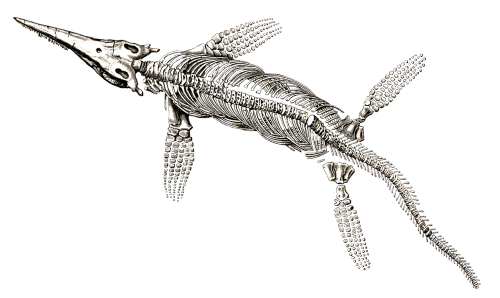Life on Earth will not last forever. Several near life extinction events have happened on Earth in the past. Here they are listed in the order in which they have occurred.
To put everything in context, the Earth is about 4.5 billion years old. Single celled living organisms first appeared between 3.5 and 4 billion years ago. Complex life composed of multicellular organisms first appeared as much as 1.6 billion years ago. Plants first colonized land 515 million years ago. The first member of the genus homo, to which modern humans belong, appeared about 2.8 million years ago.
Ordovician Extinction
About 445 million years ago on Earth, two pulses of climate change occurred over a 2.4
million year period.
The first pulse happened when the continent Gondwana became glaciated, changing the Earth
from a hothouse to an icehouse climate.
Sea levels lowered because of glaciation, and many animals living in shallow warm seas lost
their habitat.
The second pulse occurred when the Earth warmed again and intense worldwide oxygen
depletion and toxic sulfide production in the oceans killed many species.
The causes are still debated.
Loss of life is estimated to have been 85% of all species.
Devonian Extinction
About 359 million years ago, one or more supernova explosions directed enough radiation onto
Earth to eliminate the ozone layer and cause prolonged exposure to ultraviolet radiation,
causing an extinction event. This ended the Devonian period and ushering in the Carboniferous.
The supernova are estimated to have been 65 million light-years away. A supernova within 25
million light-years of Earth can extinguish all life.
Loss of life is estimated to have been 70% of all species.
Permian Extinction "The Great Dying"
About 252 million years ago, extensive volcanic activity in the Siberian Traps, lasting 60
thousand years, caused carbon dioxide level in the atmosphere to rise to 2,500 ppm,
compared to the 2025 year level of 425ppm, and the 1900 year level of about 300ppm.
This resulted in massive climate change with 80% of marine species dying due to ocean
acidification.
On land, 70% of terrestrial vertebrate species died.
More insect species died during this period than at any other time in Earth's history.
This was the end of the Permian period and the start of the Triassic.
Loss of life is estimated at 80% of all species.
Triassic-Jurassic Extinction
About 201 million years ago, a series of large scale volcanic eruptions happened over an
18 million year period.
The increase in carbon dioxide levels to at least 1300ppm in the atmosphere caused
gradual, but extensive, climate change and altered ocean acidity levels.
Loss of life is estimated at 50% of all species.

Cretaceous Extinction
66 million years ago, a large asteroid hit the Earth and famously wiped out the non-flying
dinosaurs, pterosaurs, plesiosaurs, and many other animal groups.
The angle at which it hit the Earth, plus the location, a shallow seabed next to the Yucatan
peninsula full of sulfur-containing gypsum, made it even more deadly.
The impact spewed vast quantities of vaporized seabed into the upper atmosphere.
If the asteroid had been larger, it could have ended most multicellular life.
If it had struck the middle of the Pacific ocean, there would have been no lasting
significance.
The sulfur compounds and other fine particles thrown into the upper atmosphere reduced sunlight to only 10% of normal during the first year after the impact. Worldwide temperatures plunged to below freezing for years. The upper atmosphere would only lose about 10% of those fine particles each year, causing sunlight and warmth to increase at a crawl. Ten years after impact, sunlight and temperatures were nearly back to normal. The impact ended the Cretaceous period and started the Paleogene. Estimated loss of life: 75% of all species.
For more about which species died or survived after the asteroid strike, see What Really Killed the Dinosaurs?
© 2023-2025 by Topicnews.org

